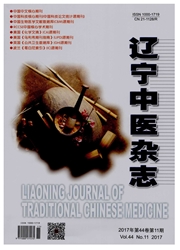

 中文摘要:
中文摘要:
The objective of this study was to evaluate the effectiveness of Chinese massage therapy in patients with knee osteoarthritis(OA) by measuring lower-limb gait parameters. We recruited 20 women with knee OA,who then underwent Chinese massage therapy three times per week for 2 weeks. The patients underwent gait evaluation using a six-camera infrared motion analysis system. They completed Western Ontario and Mc Master Universities Osteoarthritis Index questionnaires before and after treatment. We calculated the forward speed,step width,step length,total support time percentage,initial double support time percentage,and single support time percentage. We also measured the angles at the knee,hip,and ankle during the stance phase of walking. The results showed statistically significant mean differences in knee pain relief,alleviation of stiffness,and physical function enhancement after therapy(P < 0.05). The patients gained significantly faster gait speed,greater step width,and increased total support time percentage after the Chinese massage therapy(P < 0.05). There were no significant differences in the range of motion or initial contact angles of the knee,hip,or ankle during the stance phase of walking. We concluded that Chinese massage is a beneficial complementary treatment and an alternative therapy choice for patients with knee OA for short-term pain relief. Chinese massage may improve walking ability for these patients.
 英文摘要:
英文摘要:
The objective of this study was to evaluate the effectiveness of Chinese massage therapy in patients with knee osteoarthritis(OA) by measuring lower-limb gait parameters. We recruited 20 women with knee OA,who then underwent Chinese massage therapy three times per week for 2 weeks. The patients underwent gait evaluation using a six-camera infrared motion analysis system. They completed Western Ontario and Mc Master Universities Osteoarthritis Index questionnaires before and after treatment. We calculated the forward speed,step width,step length,total support time percentage,initial double support time percentage,and single support time percentage. We also measured the angles at the knee,hip,and ankle during the stance phase of walking. The results showed statistically significant mean differences in knee pain relief,alleviation of stiffness,and physical function enhancement after therapy(P 〈 0.05). The patients gained significantly faster gait speed,greater step width,and increased total support time percentage after the Chinese massage therapy(P 〈 0.05). There were no significant differences in the range of motion or initial contact angles of the knee,hip,or ankle during the stance phase of walking. We concluded that Chinese massage is a beneficial complementary treatment and an alternative therapy choice for patients with knee OA for short-term pain relief. Chinese massage may improve walking ability for these patients.
 同期刊论文项目
同期刊论文项目
 同项目期刊论文
同项目期刊论文
 期刊信息
期刊信息
